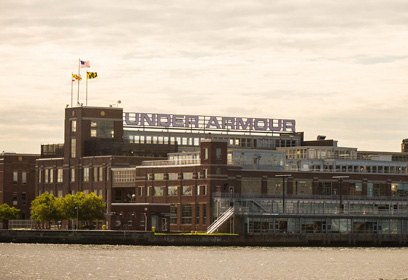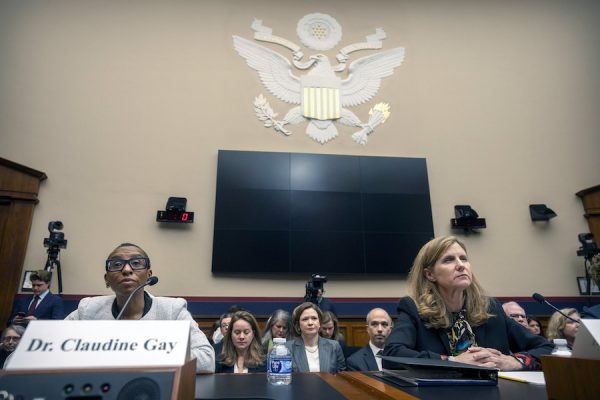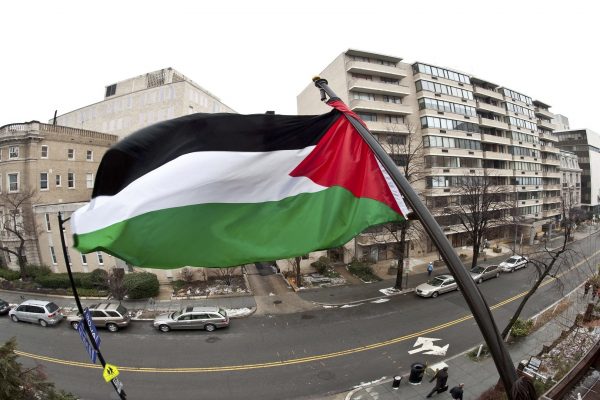On May 4, Stephen Curry, deadeye starting point guard for the Golden State Warriors, was named the 2015 National Basketball Association MVP. In honor of his award, Baltimore-based athletic gear firm Under Armour announced a special edition of his Curry One Basketball Shoe, currently the company’s bestseller.
A week before Curry won his award, Freddie Gray was buried. After the funeral, Baltimore Police deployed in full riot gear to Mondawmin Mall, situated on the city’s west side. The Baltimore school system doesn’t have its own buses, so many students access public transportation from Mondawmin. When school let out that day, students were prevented from getting on their buses by police in body armor. After a tense standoff, some students began to throw rocks at the police, who responded by tear-gassing them.
Under Armour CEO Kevin Plank was among the first in the local business community to respond to the protests. He lead his annual shareholders meeting by sending thoughts and prayers to Gray’s family and by promising he would work with other leaders to bring positive change to the city. However, Under Armour’s relationship with the city represents a significant part of the problem Baltimore and other urban areas have to contend with.
The challenge goes back decades. At one time, as a part of the Great Society program, the federal government gave direct aid to cities to help them deal with the consequences of deindustrialization and white flight. But political support for Great Society policies, never strong to begin with, fell in the early ’70s. By the time Ronald Reagan was elected to the White House, the pendulum had swung decisively toward cutting aid and decreasing cities’ ability to raise taxes. In response cities were forced to rely more on municipal bonds for revenue, and, in part because of the way bond rating agents evaluated bonds, on downtown development. City after city attempted to make its downtown more tourist-friendly. They beefed up entertainment and attracted corporate tenants, often by offering significant tax abatements to businesses that agreed to build on what would become prime real estate. In Under Armour’s case, the city generously supported the development of their downtown headquarters through $35 million in tax increment financing.
In exchange Under Armour has contributed more than its share of charity. The company turned an East Baltimore running track into a state-of-the-art football field. It covers some of the costs of the free Water Taxi that Inner Harbor tourists use to shuttle across the Harbor. And earlier this year, the company donated almost 1,600 pairs of tactical boots valued at more than $190,000 to the Baltimore City Fire Department, as well as police uniforms.
But this charity masks the underside of Under Armour’s partnership with the city. Preferential tax treatment constrains spending on important public goods.
Over the past twenty-four years spending on parks and recreation in Baltimore has stagnated while spending on policing has exploded. In 1991 the city spent approximately $37 million on parks and recreation. Today it spends around the same amount. By contrast, in 1991 Baltimore spent about $165 million on policing. Today it spends $445 million. While the city ran seventy-six recreation centers twenty years ago, it now operates only forty-one (another ten are privatized). City officials credit the reduction to a lack of resources. But if the city lacks money for parks and recreation, that is because it decided to prioritize other spending—to ramp up police budgets and subsidize businesses such as Under Armour.
These two decisions go hand in hand, signaling a transformation in local government. Cities such as Baltimore increasingly provide welfare to corporate citizens. However, rather than simply ceasing welfare provision for poor constituencies, they aggressively provide malfare. There is a racial aspect to this. Thinking about Gray and others recently killed—as well as those routinely surveilled, frisked, tazed, and assaulted—it is difficult to imagine such police harassment of and brutality against whites, even poor ones. However, this isn’t the new Jim Crow so much as neoliberalism at work. Under Armour’s CEO can, with a straight face, send prayers to Gray’s family, call for “one Baltimore,” and simultaneously ask for taxpayer assistance in building a new two million square foot downtown headquarters. It can donate uniforms and shoes to the city’s police and fire department and sports fields to kids while hamstringing the city’s ability to generate enough revenue to do so on its own. And the company does this with the support of local political officials (the majority of them black) who back the firm with their votes and policies. Mayor Stephanie Rawlings-Blake and U.S. Representative Elijah Cummings both wore Under Armour apparel in public while dealing with the protests.
Over the past few weeks we have been focusing—rightly—on anti-black policing. But we need to turn to the economic violence that attends police violence. And in thinking through solutions we need to begin with the simple proposition that Under Armour and other corporations like it ought to pay their fair share of taxes. Their success shouldn’t come at the expense of the cities they call home.








